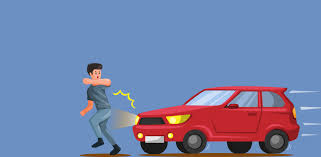Motor vehicle Laws Western Sahara
Motor vehicle laws in Western Sahara are largely influenced by the region's unique political and territorial status. Western Sahara is a disputed territory, claimed by both Morocco and the Sahrawi Arab Democratic Republic (SADR), though Morocco exercises control over most of the territory. The motor vehicle laws and regulations in Western Sahara generally align with those of Morocco, given that Morocco administers the area, especially in the parts where there is civilian governance.
Here's an overview of motor vehicle laws in Western Sahara, reflecting both Moroccan influence and local practices:
1. Driver's License and Vehicle Registration
Driver's License:
- The legal driving age in Western Sahara is 18 years.
- Drivers need to pass a theoretical exam on traffic laws and road signs, followed by a practical driving test to obtain a driver's license.
- International drivers can use their international driving permits (IDPs) for up to six months before needing to switch to a local license.
- Moroccan-issued driver's licenses are recognized in Western Sahara, and the licensing process generally follows Moroccan standards.
Vehicle Registration:
- All vehicles must be registered with the local authorities, following the regulations set by Morocco. The vehicle will be issued a Moroccan license plate.
- Vehicle insurance is mandatory for all vehicles operating in Western Sahara, as it is in Morocco.
- Vehicles must undergo periodic inspections to ensure they meet roadworthy standards and comply with safety regulations.
2. Traffic Rules and Regulations
Speed Limits:
- In urban areas: The typical speed limit is 50 km/h (31 mph), though it may vary depending on local conditions.
- On rural roads: Speed limits may be around 80 km/h (50 mph).
- On highways: The general speed limit is 120 km/h (74 mph) unless otherwise posted.
Seat Belts:
- Seat belts are mandatory for both the driver and passengers. Violating this rule can lead to fines.
- Motorcycle helmets are required for both the rider and any passengers.
Drink Driving:
- The legal blood alcohol concentration (BAC) limit for drivers is 0.02%.
- Drunk driving is strictly prohibited, and those caught exceeding the BAC limit face penalties, including fines, license suspension, and even imprisonment.
Mobile Phones:
- The use of mobile phones while driving is prohibited unless using a hands-free device.
- Violators face fines.
3. Traffic Violations and Penalties
Reckless Driving:
- Reckless or aggressive driving, such as tailgating, excessive speeding, and dangerous overtaking, can lead to significant fines and license suspension.
- The penalties for reckless driving are enforced by Moroccan police or local authorities under Moroccan traffic laws.
Parking Violations:
- Parking in no-parking zones or blocking roads can result in fines, and vehicles may be towed.
- Proper parking near public places and on streets is required to avoid penalties.
Overtaking Violations:
- Overtaking in no-overtaking zones or near pedestrian crossings, intersections, or curves is prohibited and can result in fines and other penalties.
4. Vehicle Inspections and Emissions
Vehicle Inspections:
- Vehicles in Western Sahara must undergo periodic technical inspections to ensure they are in safe operating condition, including checks on brakes, tires, lights, and other critical systems.
- The inspections also include emissions testing to control pollution, especially in urban areas.
Environmental Concerns:
- While emission standards are less strictly enforced than in other parts of the world, the region follows Moroccan guidelines to reduce environmental impact, particularly in terms of exhaust emissions.
5. Traffic Enforcement
Police Enforcement:
- Traffic laws are enforced by both the Moroccan police and, to some extent, local authorities in the region controlled by the Sahrawi Arab Democratic Republic (SADR).
- Roadblocks, checkpoints, and random inspections are common, especially during national holidays and periods of increased travel.
Traffic Cameras:
- Speed cameras and red light cameras are used in urban areas to enforce speed limits and monitor traffic signals.
6. Special Driving Conditions
Cyclists and Pedestrians:
- Cyclists are expected to follow traffic laws and wear helmets when cycling.
- Pedestrians are expected to cross roads at designated crossings, though pedestrian safety can be a challenge due to the infrastructure and road conditions.
Motorcycles:
- Motorcycle helmets are mandatory for all riders and passengers.
- Motorcycles must adhere to the same rules as other vehicles, and riders are often seen using motorcycles for daily transport, especially in urban areas.
7. Public Transport and Taxis
Public Transport:
- Public transportation options are limited in Western Sahara due to its sparsely populated areas and the ongoing political situation.
- Buses and shared taxis operate between towns, with private transport being more common in urban areas.
Taxis:
- Taxis, especially shared taxis, are a common form of transport. They operate within cities and between towns and cities in the region.
8. Road Safety and Education
- Road Safety Initiatives:
- There is limited but growing emphasis on road safety education, with campaigns aimed at increasing awareness about speeding, drink driving, and the importance of seat belts.
- Road safety programs are generally coordinated by the Moroccan government or local authorities in the region.
Conclusion
Motor vehicle laws in Western Sahara are influenced by the region's complex political status but generally follow Moroccan traffic regulations due to Morocco's administration of most of the territory. These include laws on driver’s licenses, vehicle registration, speed limits, and driving under the influence. The enforcement of traffic laws is handled by local police and Moroccan authorities, with penalties for violations such as reckless driving, parking violations, and drink driving. Vehicle inspections, including emission tests, are mandatory to ensure road safety and environmental compliance.




0 comments